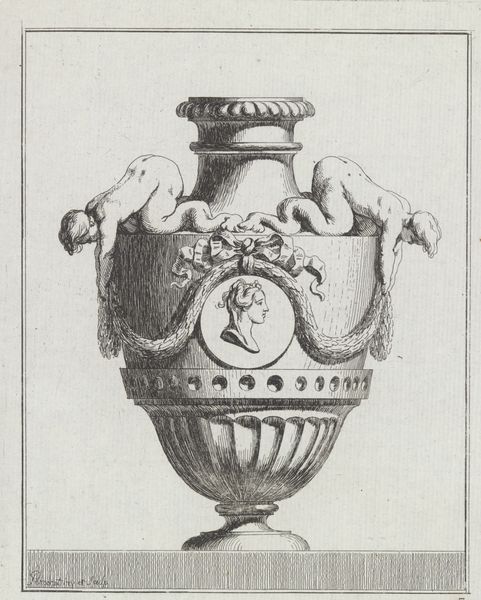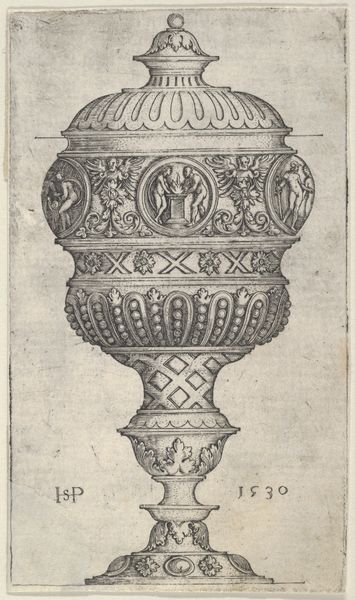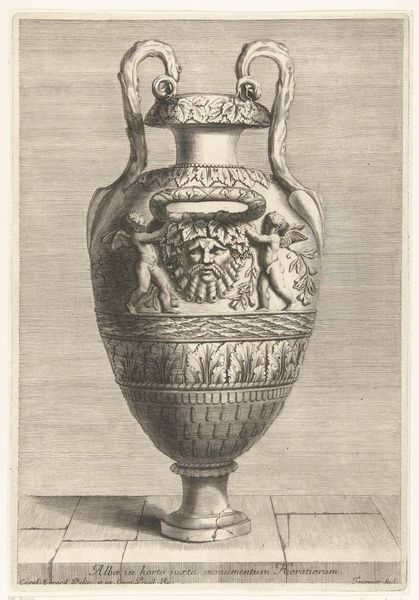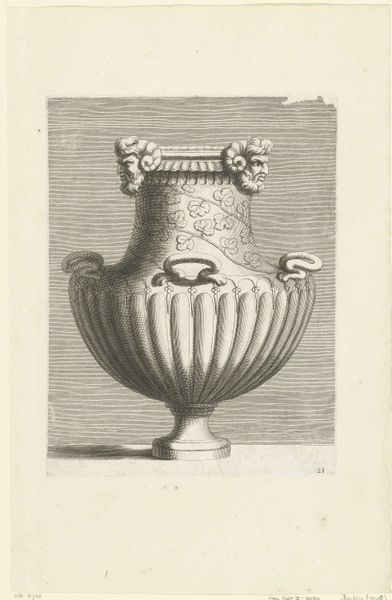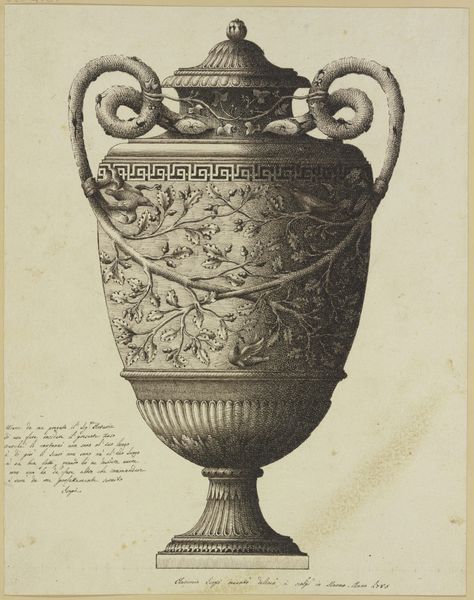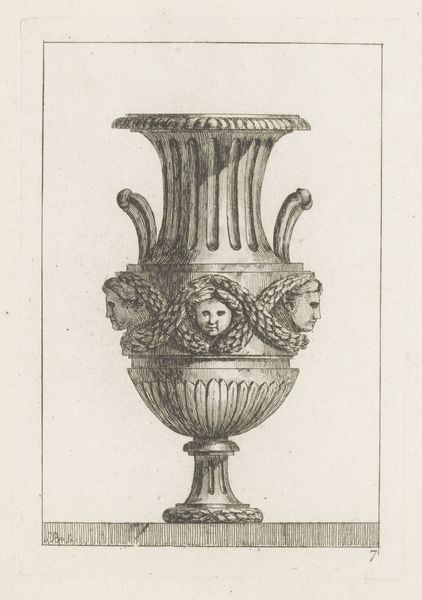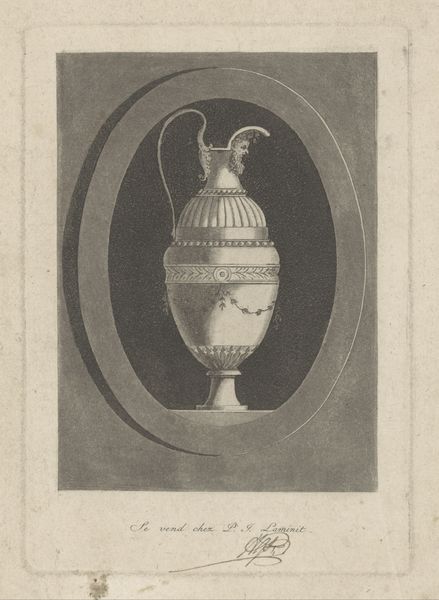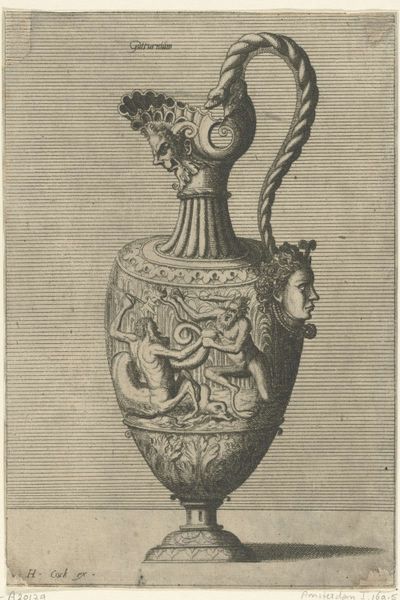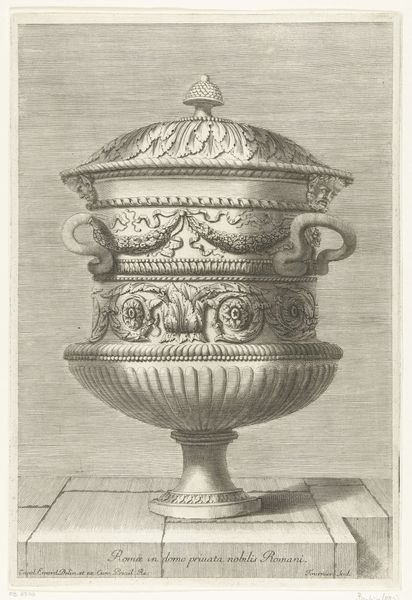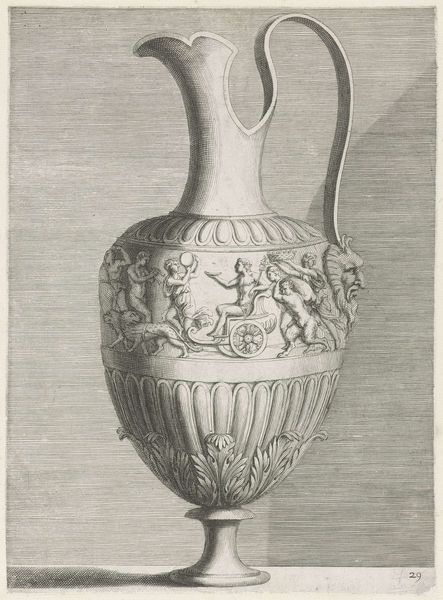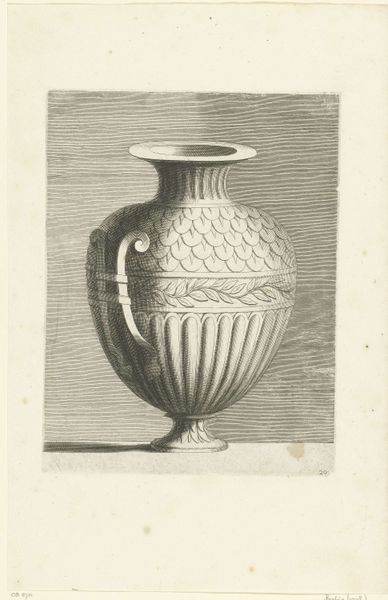
Design for a Vase with a Bacchic Frieze, from: Vases 1746
0:00
0:00
drawing, print, engraving
#
drawing
#
baroque
# print
#
classical-realism
#
vase
#
decorative-art
#
engraving
Dimensions: sheet: 9 3/8 x 6 7/8 in. (23.8 x 17.5 cm) plate: 7 5/8 x 4 15/16 in. (19.3 x 12.5 cm)
Copyright: Public Domain
Editor: Here we have Jacques François Joseph Saly's "Design for a Vase with a Bacchic Frieze," from 1746. It's an engraving, and it has such intricate details! I am immediately drawn to the textures - they appear rough and solid. What story do you find in the making of this print? Curator: The story I find is one of production. Look closely at the hatching. It isn't just creating depth. The very act of engraving—the labor involved in translating the Bacchic scene onto a copper plate, the sheer repetitive manual skill, speaks volumes about the artistic industry of the 18th century. Think of how these prints circulated; how this design *might* have informed ceramic production, and consider that the artist has not conceived an art object, but rather, an intermediary design that only achieves art status on the basis of its capacity to generate new, potentially infinite material forms. What does that reveal to you? Editor: That the print has almost more value as a catalyst to a different medium of art. I am not used to looking at the in-between labor step as the art object! It challenges that classical definition. Do you think the vase that *might* be produced from the design could lose artistic significance? Curator: Not necessarily. The final product would also be laden with material history – the source of the clay, the labour of the potter, its function in society. A materialist approach helps us to look at the cultural biography of *all* objects. However, considering this design as a commodity speaks to the transition to industry, consumption and access to high-status art objects by an emerging bourgeoisie in the 18th century. What was previously accessible only to an elite class, may now have broader circulation and utility in material form. Editor: I now see that this isn't just about a pretty vase; it's about the system that *allows* the vase to exist. Thank you, this has been so insightful! Curator: And I find renewed value in an oft-overlooked design process!
Comments
No comments
Be the first to comment and join the conversation on the ultimate creative platform.
